Step back in time and immerse yourself in the rich history of ancient Rome as you explore the Roman Forum, once the heart of the eternal city. Discover the significance of this archaeological treasure, learn about its past, and uncover the secrets hidden within its ancient ruins. This journey will not only guide you through the Roman Forum’s notable landmarks but also offer practical tips, nearby attractions, and unique experiences to make your visit truly unforgettable.
Key Takeaways
- The Roman Forum is an iconic site of immense historical significance, with notable landmarks such as the Curia Julia and Rostra.
- Practical tips like purchasing tickets in advance and exploring nearby attractions offer a comprehensive experience of ancient Rome’s culture.
- Guided tours & ongoing excavation efforts ensure visitors can appreciate the grandeur of this historic landmark for generations to come.
Roman Forum, the city center
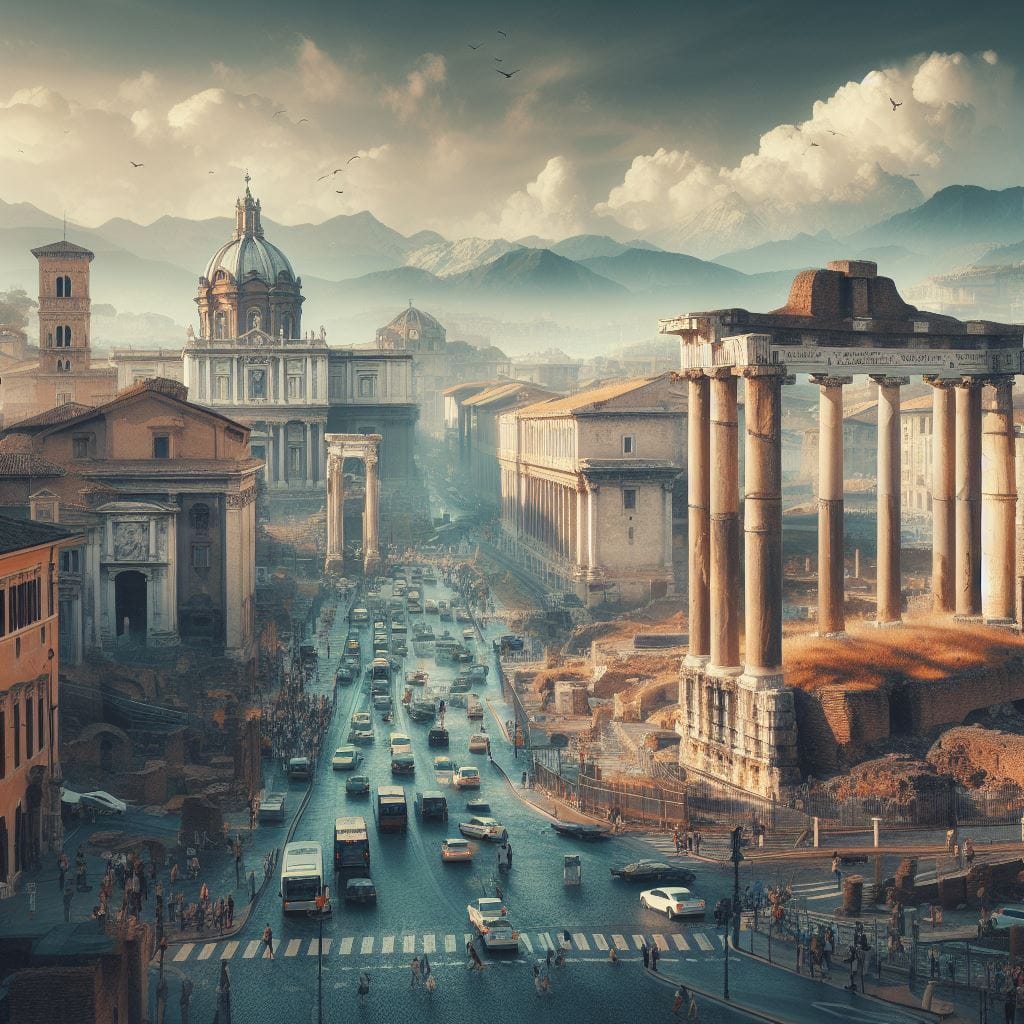
The Roman Forum, or Forum Romanum, was the epicenter of ancient Rome, serving as a bustling hub for politics, religion, commerce, and social life. Located between the Palatine and Capitoline Hills, it was the beating heart of the eternal city, where the powerful Roman Senate convened, and Julius Caesar’s triumphal processions took place. The ancient ruins scattered throughout the Forum, today bear witness to Rome’s glorious past, showcasing a multitude of architectural fragments and magnificent structures such as the Senate House, the Curia Julia, the Temple of Saturn, and the Arch of Septimius Severus.
As the Roman Empire began to decline, so too did the ancient Roman Forum. Factors such as the diminished power of the empire, a decrease in population, and the transfer of the Roman world’s administrative center to Constantinople contributed to its steady decline. Today, the Parco Archeologico del Colosseo, an archaeological park encompassing the Roman Forum and Palatine Hill, serves as a testament to the history and culture of ancient Rome, offering visitors a glimpse into the forum’s past.
The Roman Forum holds immense significance. It was a place where monumental decisions were made, religious ceremonies were conducted, and the social life of ancient Rome thrived. Exploring this ancient city, the echoes of the past underfoot and the weight of Roman history transport you back to the days when Rome ruled the world.
Roman Forum’s history
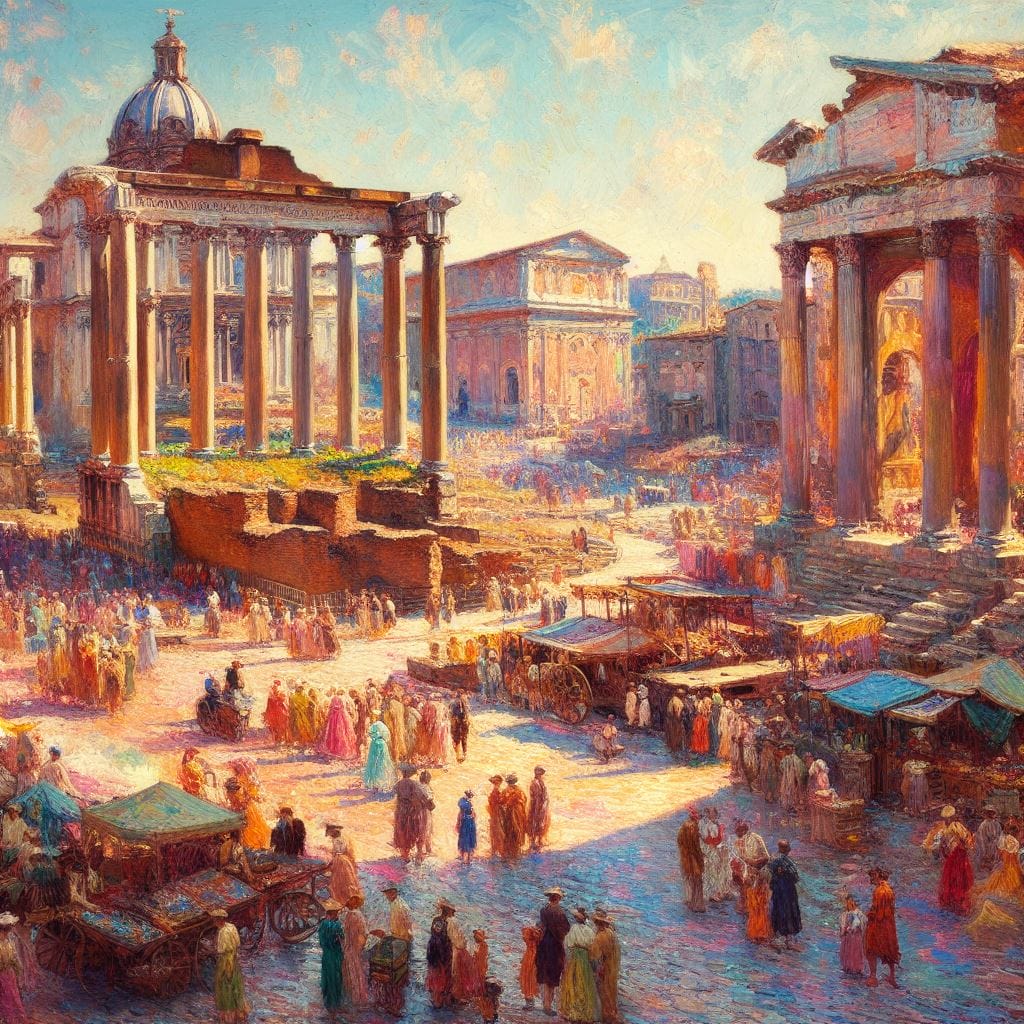
The Roman Forum’s history spans over a millennium, with its origins dating back to its humble beginnings as a marshland. As the site evolved, it transformed into a marketplace and eventually became the focal point of public life in Rome. It was around 500 B.C., when the Roman Republic was established, that people began to gather in the open-air Forum, setting the stage for the birth of the Roman Empire.
Throughout the centuries, the Roman Forum underwent numerous modifications and expansions, with each ruler leaving their mark on the landscape. For instance, during the Principate of Augustus, existing buildings were restored, unfinished projects were completed, and commemorative monuments were added, such as the temple dedicated to Julius Caesar. Emperors and their dynasties continued to contribute to the forum’s development, with structures like the Temple of Vespasian and Titus and the monumental Arch of Septimius Severus symbolizing their reigns.
The lasting legacy of the Roman Forum is evident in the ancient structures that remain today, as well as the continued excavation and preservation efforts that uncover new findings. Scholars such as:
- Rodolfo Lanciani
- Giacomo Boni
- Einar Gjerstad
- Andrea Carandini
Archaeologists and historians have played significant roles in the study and excavation of the Forum Romanum throughout the 19th and 20th centuries, shedding light on the fascinating history of this ancient city.
Notable Landmarks within the Roman Forum

As you delve deeper into the Roman Forum, you will come across several key landmarks that stand as enduring testaments to ancient Rome’s rich history and architectural prowess. Among these ancient buildings are the Curia Julia, the Rostra, and the Via Sacra, each with its own unique story and significance.
The following sections delve into these remarkable structures in greater detail.
The Curia Julia
The Curia Julia, attributed to the architectural patronage of Julius Caesar, served as the Senate House of ancient Rome and played a crucial role in the city’s political life. Within its walls, significant political decisions were made, and public events took place. The Curia Julia was not the first Senate House in Rome, as earlier iterations such as the Curia Hostilia and Curia Cornelia had been used before. However, the Curia Julia would become the most enduring and iconic of them all.
Over time, the Curia Julia underwent numerous modifications and restorations. One notable restoration occurred under the Roman Emperor Domitian in 94 CE, followed by a rebuilding after a fire in 283 CE. The policy of open-door access during Senate meetings allowed ordinary citizens to sit outside and listen to the proceedings, reflecting the democratic ideals of ancient Rome.
Today, the Curia Julia stands as a reminder of the Roman Senate’s power and influence. In 630 CE, it was transformed into the church of Saint Hadrian, ensuring its preservation for generations to come. As you explore this ancient council house, you can almost hear the echoes of political debates and witness the unfolding of Rome’s storied history.
The Rostra
The Rostra used as a platform for public addresses, announcements, and ceremonies, was pivotal to the political life of ancient Rome. It was originally part of the Comitium, a triangular paved space intended for religious ceremonies, which evolved over time to include a stepped platform and ship’s prows affixed to the speaker’s podium.
This evolution transformed the Comitium into a space reminiscent of Greek ekklesiasteria, or public assembly forums, taking on a circular form by the 4th century BCE. The Rostra’s importance in ancient Rome’s political life is evident in the countless public speeches, announcements, and ceremonies that took place on its platform throughout the centuries.
As you stand before the Rostra, imagine the powerful orators who once graced its platform, their voices echoing through the forum as they addressed the masses. This speaker’s stage bore witness to pivotal moments in Roman history, and its presence in the Roman Forum serves as a testament to the importance of public discourse in the ancient city.
Via Sacra
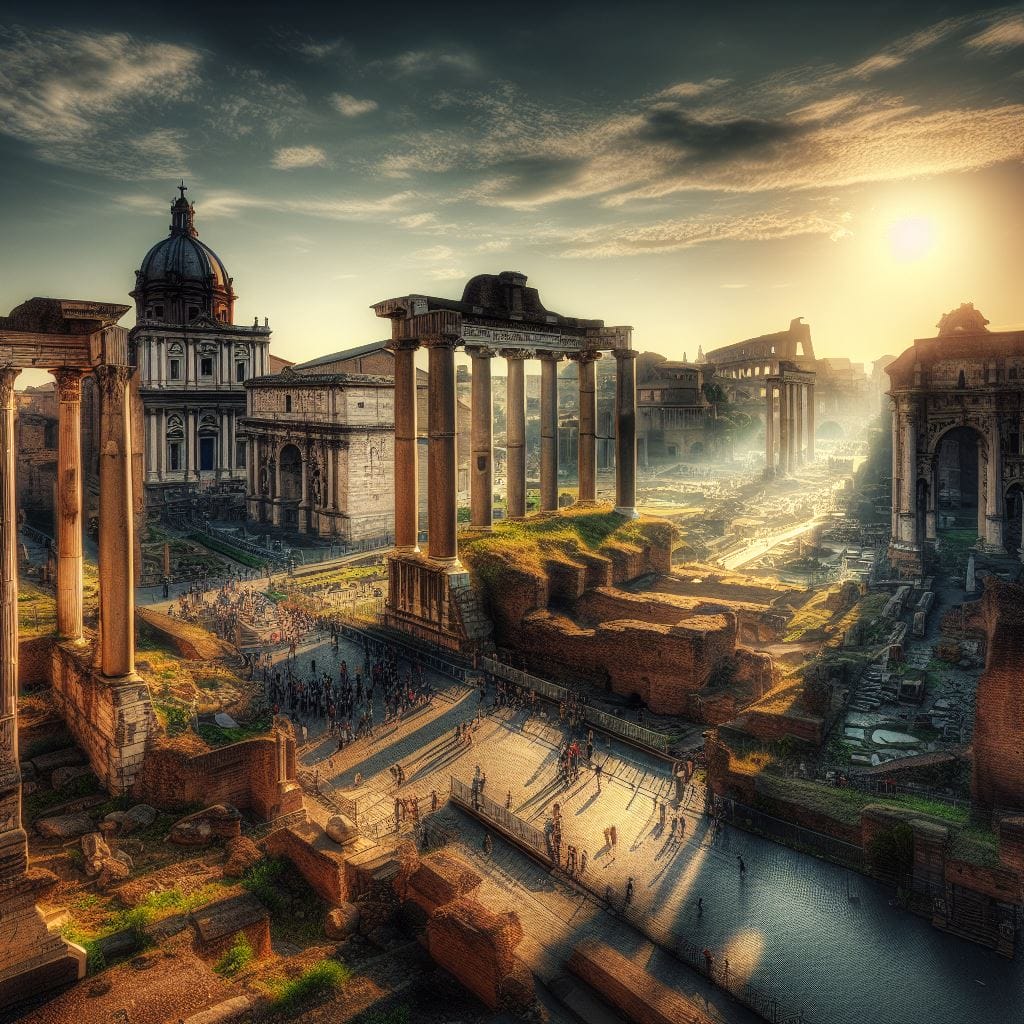
Serving as the most salient section of the processional route of Roman triumphs, the Via Sacra, the main street of ancient Rome, connected the Roman Forum to the Colosseum and other important sites. These triumphal processions were organized to celebrate Roman military victories, with the triumphal arches along the Via Sacra standing as enduring symbols of these momentous events. One such triumphal arch still captivates visitors today, showcasing the architectural prowess of ancient Rome.
As you walk along the Via Sacra, you are following in the footsteps of emperors, soldiers, and citizens who once traversed this ancient thoroughfare. The street’s significance in the Roman Forum is undeniable, as it not only connected important sites but also served as the stage for public events and celebrations that defined the spirit of ancient Rome.
The Via Sacra, with its rich history and connection to the Roman Forum, offers visitors a unique opportunity to experience the grandeur of ancient Rome. As you stroll along this ancient street, envision the triumphal processions of victorious generals and the jubilant crowds that lined its path, cheering on their heroes and basking in the glory of Rome’s past.
Visiting the Roman Forum: Practical Tips
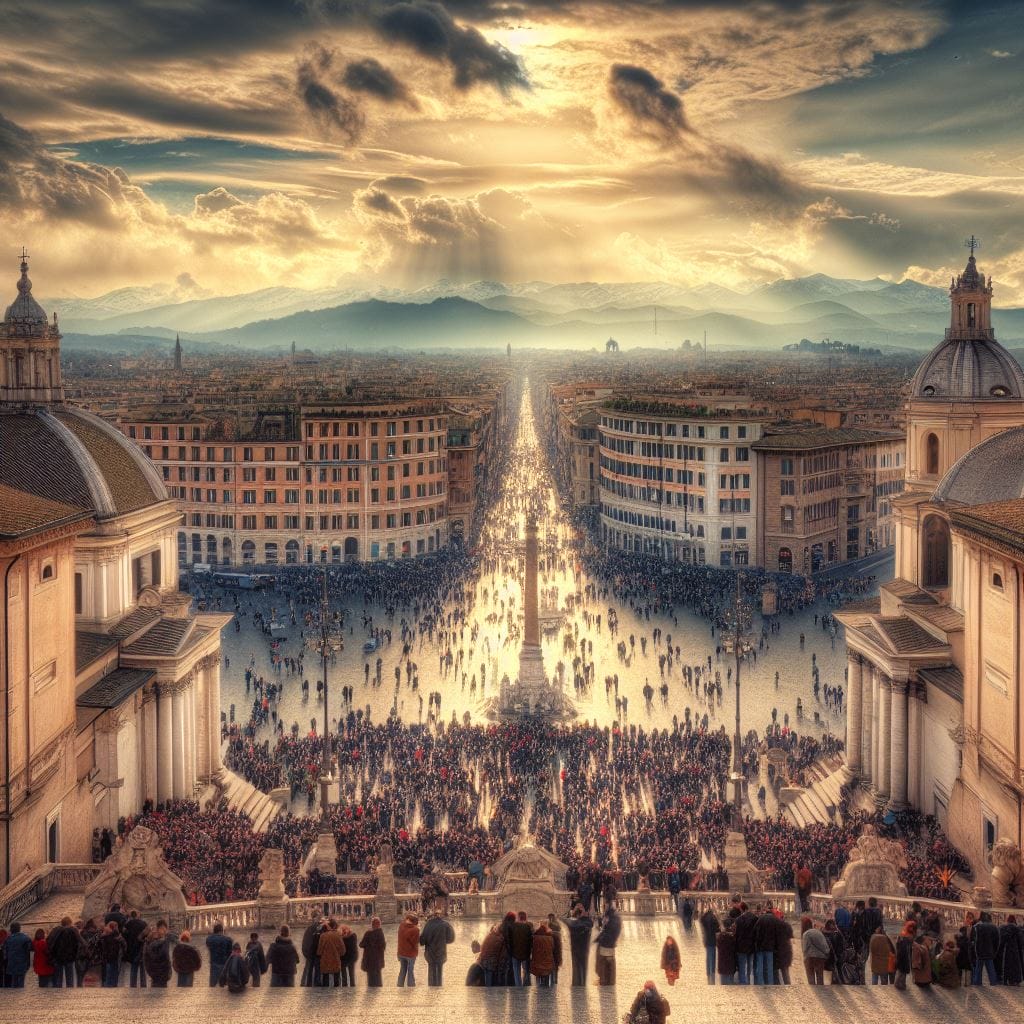
Purchasing tickets in advance is recommended to make the most of your visit to the Roman Forum. This can be done online, allowing you to avoid long lines at the entrance. Additionally, wear comfortable shoes, as the ancient ruins and uneven terrain can be challenging to navigate. To avoid crowds and make the most of your time, plan to visit the Roman Forum early in the morning.
For an optimal visit, consider exploring the Roman Forum first, preferably in the afternoon, and then head to the Colosseum the following morning. This approach will allow you to fully immerse yourself in the history and significance of each site without feeling rushed.
Remember, the Roman Forum is a treasure trove of ancient history, and taking the time to explore its many wonders will undoubtedly enhance your appreciation for the incredible achievements of ancient Rome. With these practical tips in mind, you are well-prepared to embark on your journey through the Roman Forum and uncover the secrets of the Eternal City.
Exploring Nearby Attractions
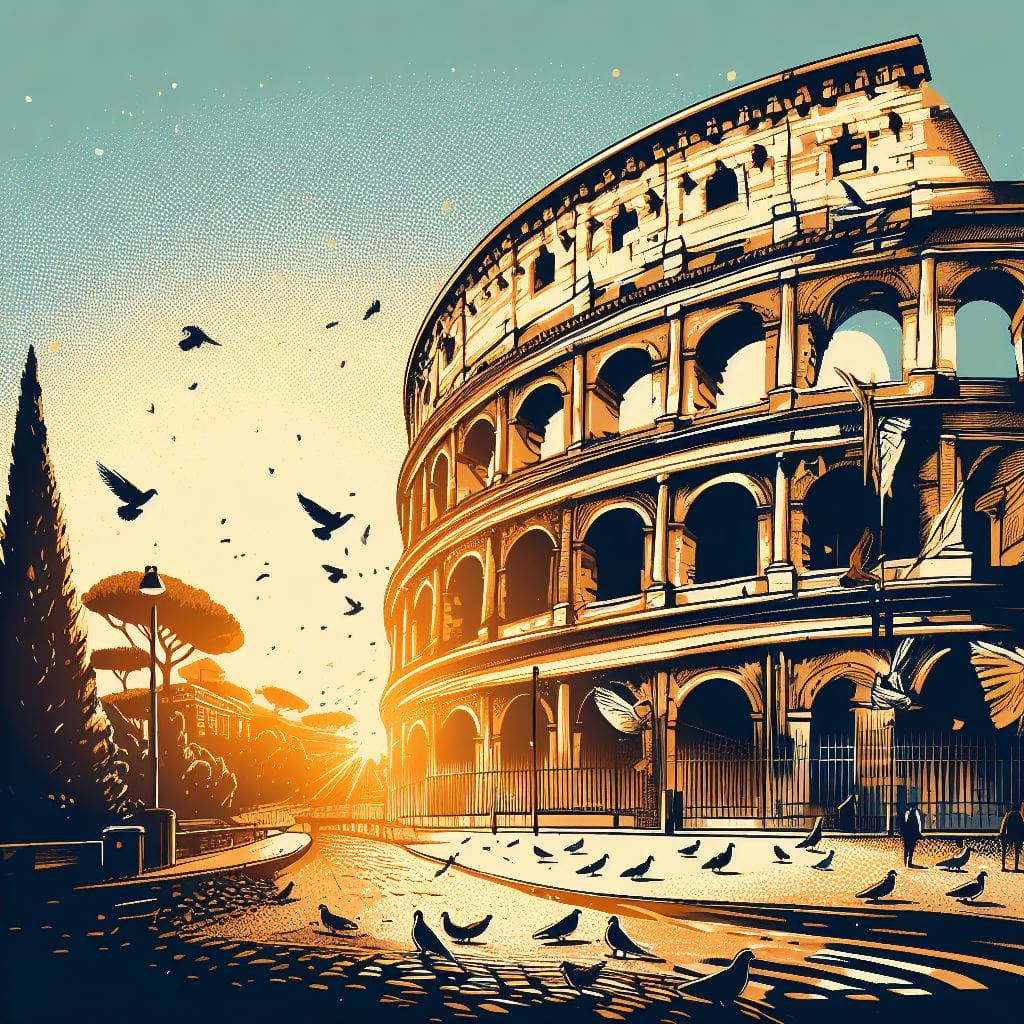
After visiting the Roman Forum, you may be eager to explore more of ancient Rome’s fascinating landmarks. Nearby attractions include Palatine Hill, the Colosseum, and the Catacombs of Rome. Each site offers a unique glimpse into the life and culture of ancient Romans, providing a well-rounded understanding of the city’s storied past. The Colosseum is just 5 to 10 minutes away, on foot.
Palatine Hill, once home to Rome’s ruling classes, boasts an array of imperial palaces and offers some of the most impressive views of the Roman Forum. The Colosseum, an iconic symbol of ancient Rome, stands as a testament to the architectural prowess and entertainment culture of the time. Lastly, the Catacombs of Rome provide a fascinating and eerie insight into the subterranean burial practices of early Christians.
Exploring these nearby attractions not only deepens your understanding of ancient Rome but also creates lasting memories of your journey through the Eternal City. So, venture forth and discover the treasures that await you beyond the Roman Forum.
Guided Tours and Experiences

Reserving a guided tour can enhance your visit to the Roman Forum and help you gain a deeper understanding of its history and significance. Guided tours offer the advantage of time-saving and queue-skipping, as well as a more comprehensive knowledge of the site. Additionally, private guides are available for a more personalized experience.
For a truly immersive journey into ancient Rome, the Circo Maximo Experience offers a unique opportunity to explore the world of chariot racing through the use of Virtual Reality headsets. This 40-minute walking tour transports you back to the 1st century C.E., providing a glimpse into the thrilling and competitive world of the Roman Empire’s favorite pastime.
Several tour providers, such as Through Eternity Tours, offer guided walking tours of the Roman Forum led by highly knowledgeable archaeologists. These tours provide an unparalleled level of expertise and insight, allowing you to fully appreciate the incredible history and architecture that the Roman Forum has to offer.
Dining and Shopping Near the Roman Forum
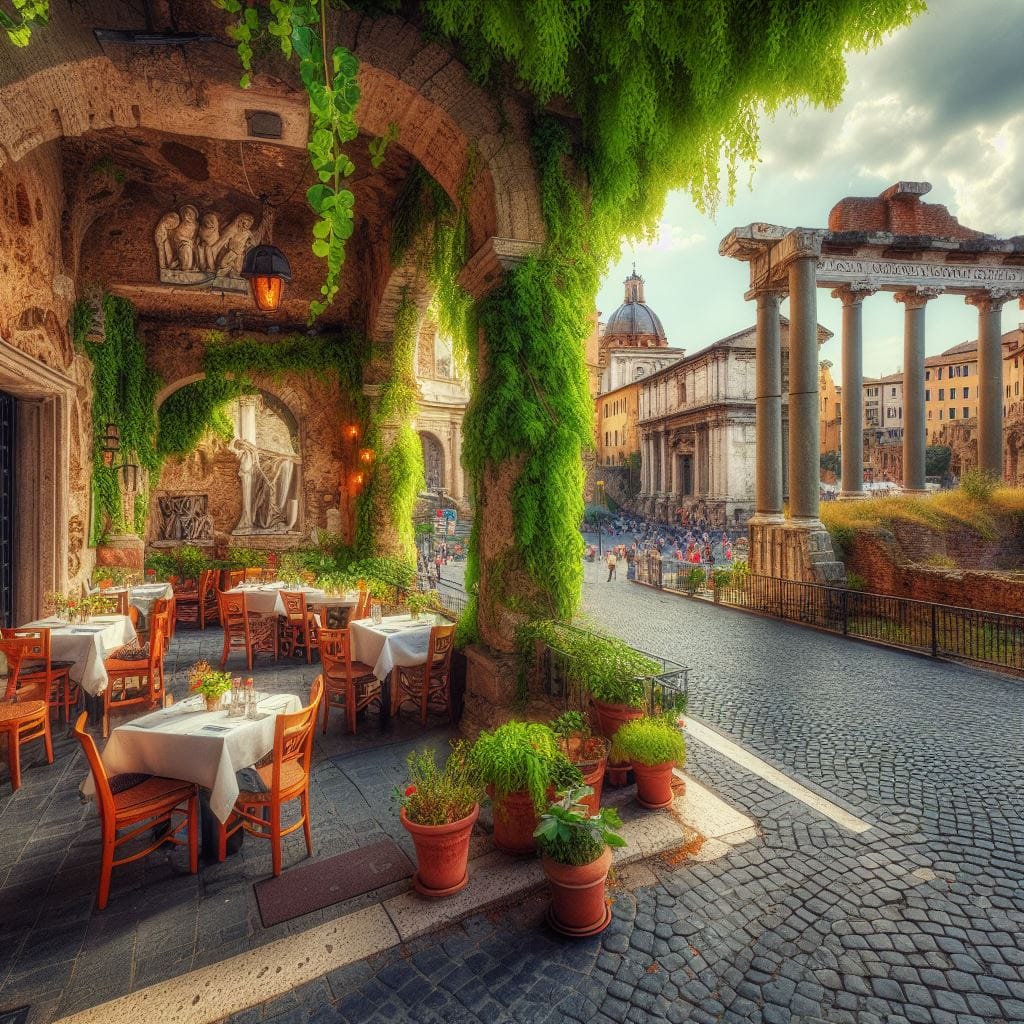
A day of exploring the ancient ruins of the Roman Forum might leave you needing sustenance and perhaps a little retail therapy. Luckily, a selection of dining and shopping options can be found in the vicinity, offering a variety of cuisines and local products to enjoy after your visit.
Dining options near the Roman Forum include:
- Pizza della Madonna dei Monti
- La Prezzemolina
- Flor Gelato Italiano
- La Nuova Piazzetta
- Osteria Maracuja
These establishments offer a diverse array of culinary delights, ranging from traditional Italian fare to artisanal gelato, ensuring that your taste buds are just as satisfied as your sense of adventure.
For those interested in shopping, the following places near the Roman Forum provide a variety of retail options and unique local products:
- Galleria Alberto Sordi
- Leather Craftsman
- Outlet Roma
- Riverside Market
- Mercato di Via Sannio
Whether you’re searching for the perfect souvenir or wish to indulge in some day-to-day shopping, you’ll find plenty of options to choose from near the Roman Forum.
The Ongoing Excavation and Preservation Efforts

The rich history and architectural marvels of the Roman Forum continue to captivate the modern imagination, largely due to the ongoing excavation and preservation efforts at the site. These efforts not only uncover new discoveries but also ensure that the Roman Forum remains accessible and informative for future generations.
Archaeologists, researchers, and preservationists work tirelessly to study, excavate, and conserve the ancient structures and artifacts that make the Roman Forum such an important and enduring testament to the Roman Empire’s greatness. Their dedication and expertise have enabled countless visitors to experience the awe-inspiring history that lies within the forum’s ancient ruins.
Exploring the Roman Forum, take a moment to appreciate the ongoing excavation and preservation efforts that have allowed your journey through ancient Rome. Through their tireless work, the wonders of the Roman Forum will continue to inspire and educate visitors for generations to come.
Summary
In conclusion, the Roman Forum stands as a testament to the grandeur and importance of ancient Rome, providing visitors with an unparalleled glimpse into the political, religious, and social life of the eternal city. From its notable landmarks, such as the Curia Julia, the Rostra, and the Via Sacra, to the ongoing excavation and preservation efforts, the Roman Forum offers a unique and unforgettable experience. As you walk through the forum’s ancient ruins, embrace the opportunity to step back in time and immerse yourself in the rich history of the Roman Empire.
People also ask:
What was the Roman Forum known for?
The Roman Forum was the center of day-to-day life in Rome, hosting public meetings, law courts, gladiatorial combats, and open-air markets. It also served as a place for religious ceremonies, commerce and trade, elections, and public speeches.
What are 2 facts about the Roman Forum?
The Roman Forum was the center of public life in Ancient Rome and comprised two temples, the Temple of Saturn and the Temple of Castor & Pollux. It was also home to the Vestal Virgins and the world’s oldest shopping mall.
Is the Roman Forum worth seeing?
The Roman Forum was an area of immense cultural significance, with beautiful ruins from important religious, political, and economic buildings. Visiting it would certainly be worthwhile.
What was the difference between the Roman Forum and the Imperial Forum?
The Roman Forum was less organized compared to the Imperial Forum, which had a logical and homogeneous organization of spaces. It was also isolated from the rest of the city and structured around five large arcaded squares, giving it a distinct unitary architectural whole.
What was the Roman Forum’s main purpose in ancient Rome?
The Roman Forum served as a central hub for politics, religion, commerce, and social life in ancient Rome.
